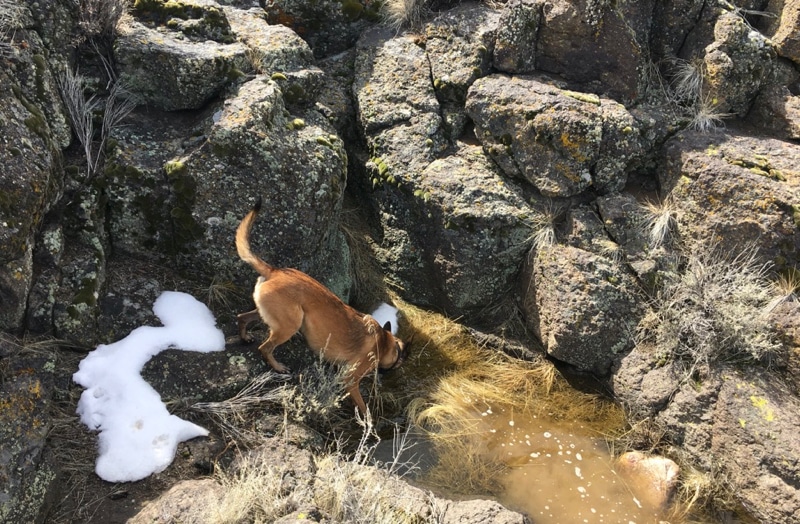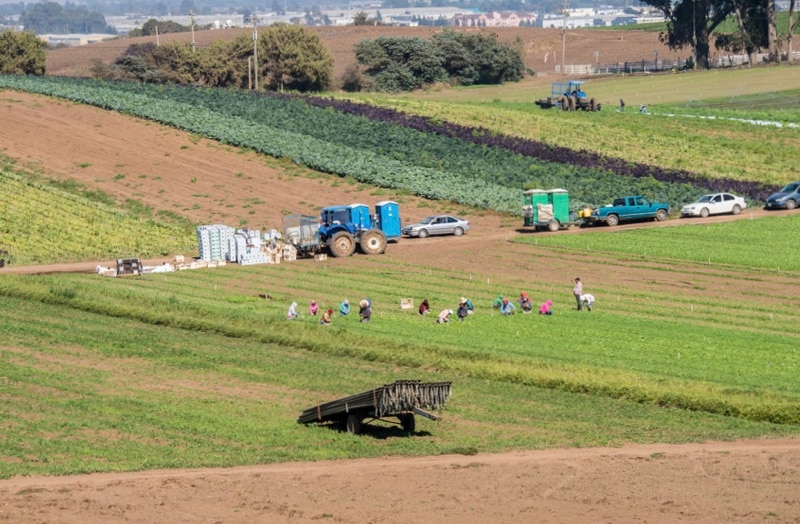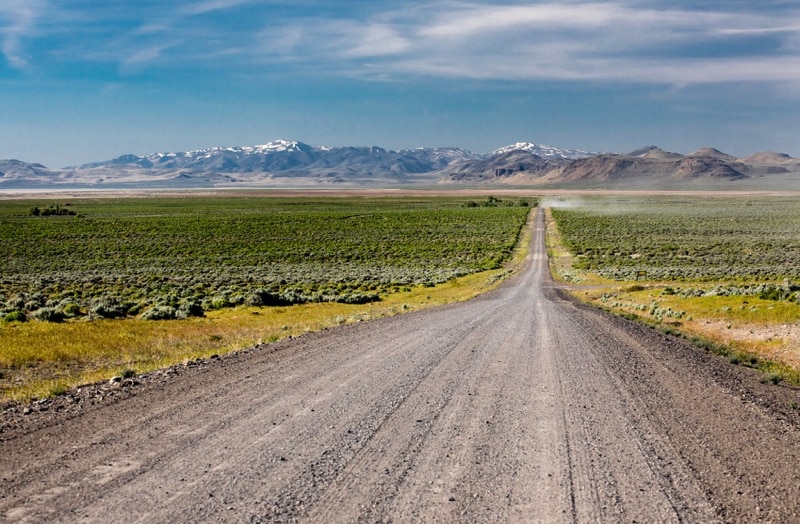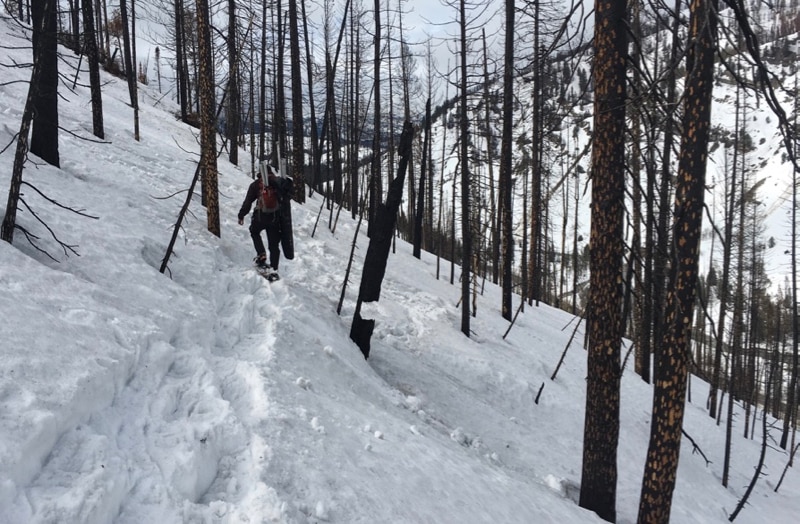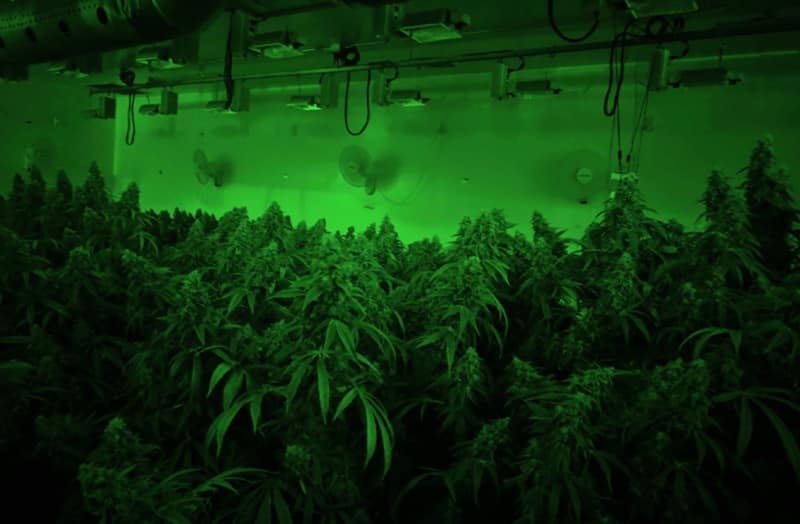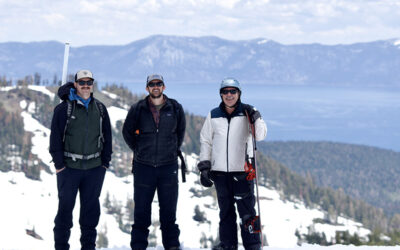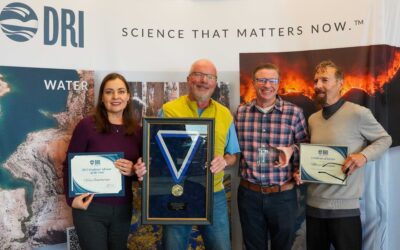The DRI Foundation has just awarded the next round of seed grants to six teams of researchers through the Innovation Research Program (IRP). The IRP provides the start-up funding DRI scientists need to test new ideas and produce initial data, which will help them build the scientific case for future research projects.
The 2020 Innovation Research Project winners were chosen through a competitive selection process and reviewed by a committee comprised of previous IRP recipients and DRI’s Vice President for Research. The selected projects demonstrate creative, innovative research or technological development that advances DRI’s mission.
Advancing the science behind canine odor detection evidence in criminal trials
Mary Cablk, Yeongkwon Son, Andrey Khlystov
Cadaver dogs are often called on to detect the odors of human remains at a crime scene, and the evidence they find—the odor left behind from a body on a killer’s clothing, for example—is treated as hard scientific fact in criminal trials. However, there are currently no physical or chemical forensic methods to verify this kind of evidence. In a first-of-its-kind study, Dr. Mary Cablk and her team are employing a scientific approach to compare the detection of residual odors by dogs and laboratory instrumentation. This research will bolster the scientific foundation for canine evidence used in homicide cases and position DRI to secure future funding for projects investigating a wider span of canine evidence, such as contraband.
Supporting climate adaptation for specialty crop farmers
Kristin VanderMolen
Climate change impacts like flooding and drought threaten the production of specialty crops like fruits, nuts, and vegetables in California, a state that grows more than half of these crops nationwide. DRI’s Kristin VanderMolen, PhD, and partners at the Climate Science Alliance at Scripps Institution of Oceanography are investigating how farmers are adapting to these challenges in order to identify how climate research can best support them. This research lays the groundwork for field studies to test and verify the effectiveness of farmers’ adaptation strategies and the development of climate information products to support farmers into the future. Additionally, this project builds relationships between DRI and critical partners, like the Climate Science Alliance and University of California Cooperative Extension.
Enhancing soil moisture data to improve hydrologic modeling
Ming Liu
Soil moisture is a critical variable when it comes to understanding processes like evapotranspiration, the transfer of water from land surfaces and plants into the atmosphere. Most hydrologic models rely on soil moisture data from satellite remote sensing, but this data lacks ground truthing, especially in remote arid places. In collaboration with Myriota, an Internet of Things (IoT) nanosatellite startup, DRI’s Ming Liu, PhD, is developing sensor stations by integrating Myriota’s nanosatellite transceiver with custom-made universal dataloggers. The sensor stations will be deployed across Nevada to collect soil moisture readings from the field. This project aims to improve the data used in hydrologic models and build the foundation for broader sensor deployment for environmental research in arid lands.
Tracing the history of atmospheric river events to improve water resource management in the Western U.S.
Joe McConnell, Nathan Chellman, Christine Albano
Atmospheric rivers carry significant amounts of water vapor from the tropics to the Western United States, providing 30-40% of the total precipitation during a typical winter season. However, these rivers in the sky can also result in extreme weather like flooding and wind storms, which pose risks to infrastructure and human safety. Despite the significant impacts of atmospheric rivers, little is known about how their frequency and intensity has changed over the past several centuries. Using chemical analysis in DRI’s state-of-the-art Ice Core Laboratory, Joe McConnell, PhD, and his team are working to identify isotopic signatures that differentiate snow produced by atmospheric rivers from that produced by other storms. If successful, researchers will be able to leverage this work in future projects to develop a history of atmospheric rivers over the last several hundred years. Such a record will be valuable for informing water resource management and hazard mitigation, especially as the climate continues to warm and change.
Evaluating health risks from cannabis smoking and vaping
David Campbell
The legalization of cannabis products for both medical and recreational use in many states, including Nevada, has resulted in widespread commercial production of non-tobacco smoking and vaping products. However, this growth hasn’t been accompanied by research into the health effects from use of those products—in fact, there has been virtually no analysis of the many chemical compounds that are inhaled by users when smoking or vaping cannabis, due in part to federal research restrictions. Dr. David Campbell is developing a portable sampling system to collect the smoke or vapor for laboratory analysis, and it will be tested with cigarettes made from legal hemp, which is identical to marijuana except for the lower THC content. This research will bolster what we know about the health risks associated with cannabis use and develop intellectual property DRI researchers can leverage in future projects.
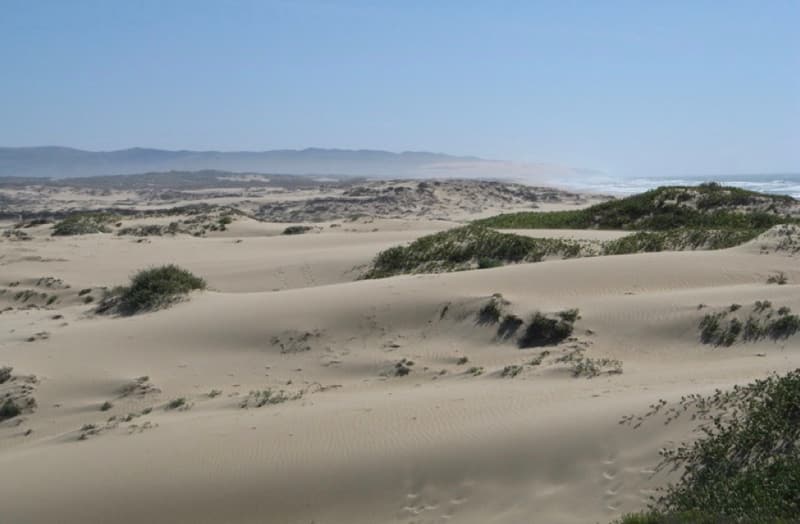
The Oceano Dunes State Vehicular Recreation Area (SVRA) on the Central California Coast, where Gillies and colleagues have previously conducted research on dust and wind erosion.
Modeling and Analysis of Fluid Flow Interactions with Porous/Permeable 3-Dimensional Forms
Jack Gillies, Eden Furtak-Cole
Dust emissions, particularly from arid regions, directly impact air quality, human health, agricultural production, and the planet’s climate. Windy conditions drive the formation of dust through erosion, and while vegetation and structures like fencing are known to mitigate wind erosion and dust emissions, researchers have been unable to quantify their actual impact in large scale models. Dr. Jack Gillies and his team are working to incorporate the erosion mitigation impact of vegetation and engineered control structures into wind erosion models. These models will provide a cost-effective, efficient way to develop dust control strategies and improve air quality. This work will also position DRI as a leader in the ability to evaluate dust emissions and lay the foundation for future projects, particularly as problems like drought and desertification become more pronounced under a warming climate.
